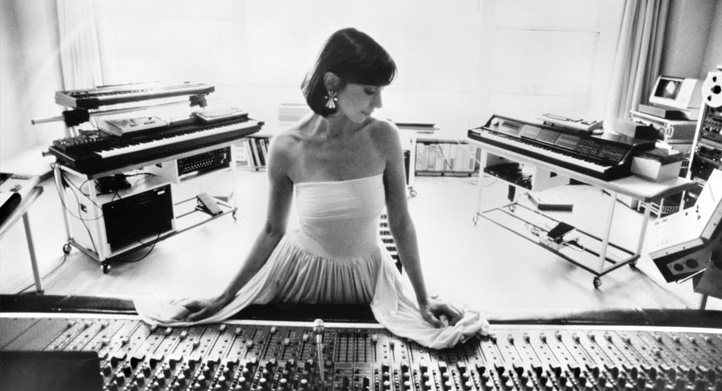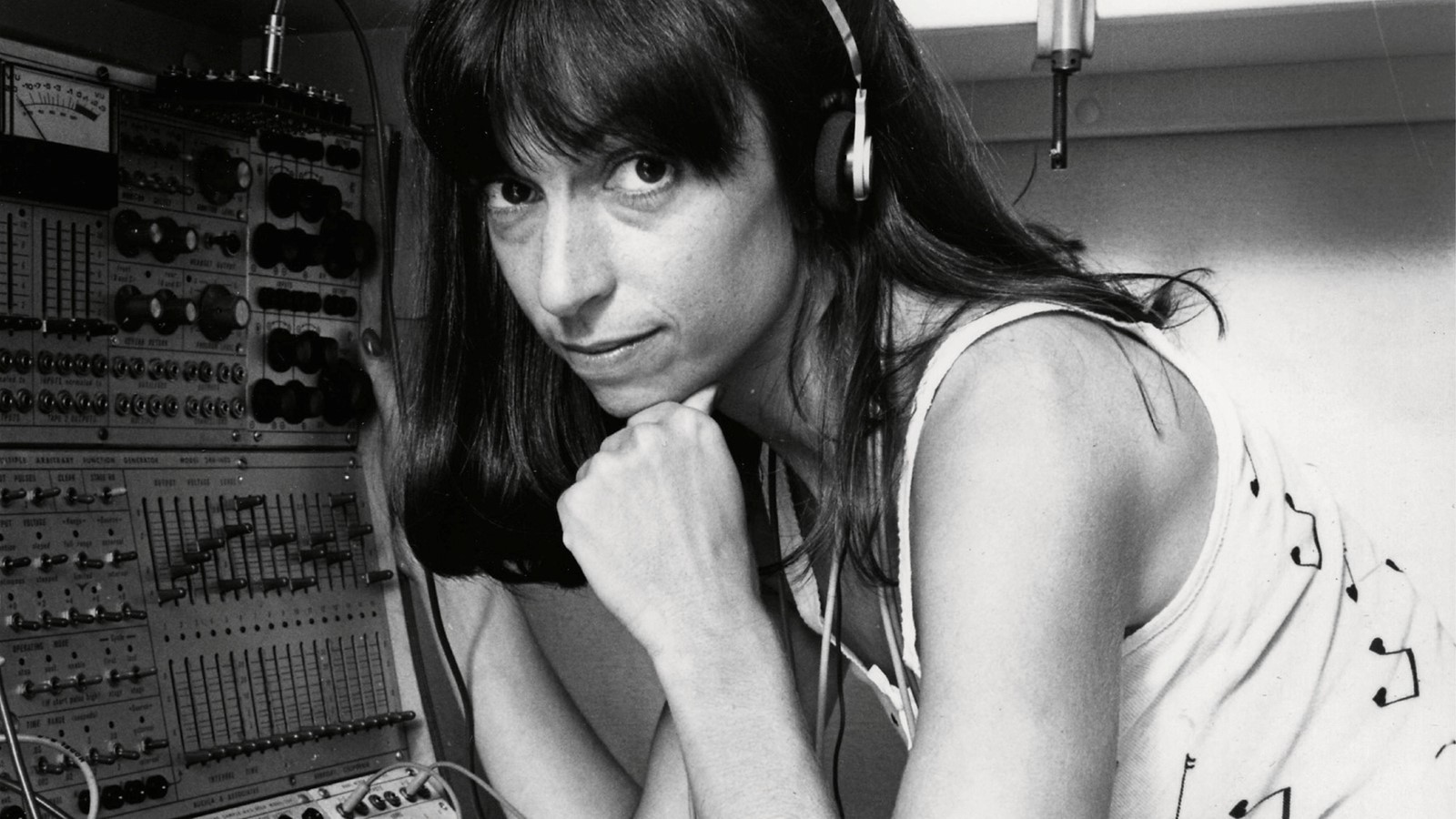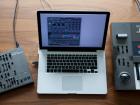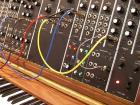Interview with Suzanne Ciani (Part 2)

Post date:
Suzane Ciani requires no introduction. A five-time Grammy nominee and Indie Music Awards Winner, Ciani has been one of the pioneers in the world of electronic music. She agreed to an interview and we chat about her career, her favorite synths, her successes in the advertising industry, the film that was recently made about her life and much more. We had so much to talk about, it was impossible to summarize it all in one article, so we will be posting the interview in parts over the next couple of weeks.
What is your favorite synth that you have used?
The 200, the Buchla 200 is by far my favorite and now I’m using the 200E. The 200E is nice, I’m happy to have it, but if I could have a working 200 I would be very happy. I actually got a clone of one of the 200 modules, the one called the MAFG, the 248, it’s called the Multiple Arbitrary Function Generator. So to find a working original MAFG is pretty impossible, but I got a clone. It doesn’t quite work properly, but I don’t think I could perform really without it because when you are not using a keyboard you really do need higher level controls of your material and the MAFG gives you that. The MAFG allows you to feed four sequences into it and then access those. It’s like a three dimensional sequencer.
You played the synthesizer in a time when not a lot of people from the public really knew what they were. What was that like?
In the day I was on a mission because I really thought that this was an idea for which the time had come and it was just a matter of minutes before everybody would have one. It just seemed so inevitable and so I had a cause and I was very patient. I always answered all the questions, I took my time, I explained everything, I became a spokesperson for electronic music. I would do a concert and people would say “Where is the sound coming from? Where is the tape recorder?” And I would say that there is no tape recorder, it is actually coming from the machine. And they would say “No, where is the sound come from?”
One thing that helped with the Buchla is that the lights are integrated with the sound, so if you are hearing a rhythm you can see that rhythm. If you are hearing a movement in space, of the sound say, going around in a circle, you could see that on the lights of the Buchla. That was some hopeful feedback!
It was very, very frustrating. There were a lot of issues. Like I said, I required to perform in quadraphonic. I came to New York and was supposed to do a concert in a big theater at Lincoln Center and they wouldn’t give me four speakers, so I refused to play. I then I thought it was time to renovate the theaters, we need good theaters where we can perform this music. So I spent three years trying to renovate Lincoln Center, and that didn’t work. Anyway, now that I’m coming back to it, I’ve always had quadraphonic, even though the traditional theaters are not set up for that. But it still can work. You need a sub-woofer, the bass is not very directional because the wavelengths are so long, so you don’t have to worry about the location of the bass so much. And then you set up the four mid- and high range speakers and if you use discrete placement of the sound. Say the sound is only in one speaker at a time, then you do get that experience. You hear the movement of the sound, because it is not masked. If it is in all the speakers all at once, you might hear it in the speaker that you are next to, but when the sound is moving and it is moving in a discrete way. Discreet meaning that it is in one speaker at a time, you really do get the spatial movement of the sound. My next project is to release some quadraphonic recordings and my feeling is that everybody now has these surround sound theater setups.
After starting with analogue, you made the transition into digital, but you’ve returned to analogue again. What is your view on the strengths of digital that attracted you at the time and why have you chosen to leave it behind?
Well I never wanted to leave the analogue, but my system broke down and it couldn’t be fixed and half of it was stolen, so it was very traumatic for me to leave it because I really had no choice. So I gradually adapted to the other instruments. It was at a time when big manufacturers were coming in. When it all started there were these boutique designers, Bob Moog, Don Buchla, Oberheim. And then the big companies moved in, Roland, Yamaha, Korg. For my first album I used a Prophet 5, I loved that instrument, Dave Smith’s instrument. I know it is a keyboard instrument, but I also did a lot of sound design on that instrument. It was very easy to edit.
Back then I had a very big studio in New York that became the center of high-tech music production. So we did a lot of beta testing for new gear and kind of always had the first of everything. Whatever it was - we got it. It was fun! All this new stuff. Every day brought something new and I had a lot of other players with me. I had a Lyricon specialist, I had a guy that played the Voyetra. There were a lot of different skill sets in my group, so it was fun and exciting, but I was never a fan of the mouse. So at a certain stage when it started, it wasn’t about the mouse. The instruments had knobs and dials and all that. You could edit and then at a certain point it became software driven and you had computer sequencers and digital audio workstations and suddenly everything was the mouse. At about that time I went back to the piano.
I still use the computer to record, it’s a tool - a wonderful tool, but with the soft synths there’s just too much mousing. Now I am going to go back and do a new album at the end of this year. I’m doing two things, I’m doing the live Buchla albums and I’m going to do an orchestrated album that I’ve already written. I wrote it five years ago in Venice Italy and I never recorded it. We’ll see, I do want to explore the soft synths for that album.
You chose to become independent and you started your own label in 1995. Why?
Yeah, in 1994 actually was when we started it and I started out independent really. My first two albums were licensed, I never signed a traditional record deal because my intuition was that these were my children and I wasn’t going to give them up. I don’t care what anybody says.
Then I guess you’d say that I made a mistake. A friend was starting a label and he asked me to go along with the label and not to worry - I would get all my recordings back. I knew what the risk was of not owning your own work, but of course I never did get them back. So I have five masters that are now on Sony. Maybe, legally, I’ll be able to get them back. There’s a new law that after 35 years you can apply to get your masters back, so I’m waiting for that, another several years...
In the meantime, it really was the right time to do it. I also was lucky in that I married a lawyer and he helped me get out of that record deal and then he helped me to set up the new label. In those days the big problem was distribution, it was not manufacturing. In the early days, manufacturing was a problem because you couldn’t make a CD, it was all LPs and it was very sophisticated. But then when CDs came in that opened the door to manufacture, you could suddenly make product. I know nowadays people make vinyl, but in the old days vinyl was owned by the major labels. They owned the distribution, they owned everything.
So now you had the beginnings of an independent distribution, it wasn’t highly organized. In the United States you had to make six or seven deals just to cover the country. The south-east, north-east, the mid-west, the south-west etc. Then all of a sudden, about 1994-1995, indie distribution networked and became national and it was unbelievable. Because now you could make one deal and cover the whole country. And it wasn’t long before the major label said uh-oh, this is trouble, this is a problem. They bought out a lot of the indie distribution and they killed them.
But now we are saved in a way by online distribution. It helped the indies, but not right away. When iTunes started they wouldn’t make a deal with an indie, but over the years things have gotten better. Of course, now we are going back to vinyl, which means you have storage, shipping, manufacturing etc.. But I do think that digital has deteriorated a bit. Some of it, as they ported it over repeatedly from digital to digital to digital - I think the quality often has suffered. I don’t think we really care about quality right now, but there was a time when quality was everything. My album, Silver Ship, that was digital but I recorded it in 192 kHz 24-bit (nobody records at 192 kHz 24-bit). The computer practically choked to death doing that bitrate and all my recordings that I ever did - quality was the top requirement. I remember being in the studio and we had a digital multi-track and an analogue multi-track, and before recording any sound we’d record it on each machine and decide which sounded better. It was odd because the high frequencies always sounded better on analogue and it was just empirical. You just sat there and you listened and you noticed and you made choices.
You have toured the US, Italy, Spain, Asia etc. Why did you decide to settle in northern California?
Well, I didn’t. I came out here for one year, I was actually going to move to Italy, but my dad was not feeling well. My dad was sick and he sad “Please don’t move to Italy. Stay in the country.” My sister lived near here and she put an ad in the local newspaper that said a composer was looking for a place for a year and the woman who owns the house decided to go on a trip for a year... I moved into this amazing place right on the ocean and one thing led to another. The woman never came back, she fell in love in New Zealand, I met my husband here in this house. We are divorced now, but life just took its course and I’m still here.
I think some of those catalysts, to uproot someone from a place takes a lot of energy. You don’t just make these, it takes a lot of inertia. The only reason I got out of New York was because of the cancer, I had an early breast cancer, and that scared me so much that I moved. I mean it was not really connected, but you don’t know at the time. So now I don’t know what will get me to move away from here.
You were the first female composer of a major Hollywood film, how did that come about?
I was hired by a women. Lily Tomlin, it was her film and her partner and the head of the studio at Universal was Verna Fields. Verna got promoted because she had edited Jaws and Jaws was a huge hit. So suddenly there were women in positions of power - that doesn’t happen very often. And in fact another woman apparently was not hired for another fourteen years.

How hard was it to get accepted as a female synthesizer player in the musical community?
Well, for me it wasn’t hard because I didn’t really have any competition. I came on to the scene when nobody was doing it. There were a couple of people in LA, but there wasn’t really anybody doing it to the extend I was doing it in New York. With the Buchla I could do a lot of real sound design even though we didn’t call it sound design then. I called it musical effects, but I had a lot of control over making unique sonic creations that represented ideas and products. I worked in commercials and I also did a lot of session work for recordings and I was like the new kid on the block. I think it was different from the way that it is today.
The other thing was the reason why I started my company then. It was to really take advantage of the possibilities, because if you were just hired by other music houses or recording companies, they could never integrate the electronic sound optimally. They didn’t leave space for it, you really needed to plan from the beginning of a production how you were going to use electronics instead of just overdubbing it as an afterthought. Which is what people did: "let’s put some magic fairy dust on this production - please add your synth magic."
At its height, Ciani Musica was taking many jobs every week, what was it that made you stand out from the crowd?
We would do a recording and it would be used in multiple commercials in those days. It was a fast-moving turnaround, so somebody would contact you, you’d look at the film, you’d stay up all night writing, you’d record the next day. It was an intense production, something I could never do now.
As for the jobs, I got them because of the high-tech. Technology was gaining momentum in music, but also in a lot of areas. A lot of products had a technological identity. The talking dishwasher, the automobiles that were more technologically advanced... Atari, the video games that were just starting. So there were a lot of products that wanted to be seen as new and different and high-tech, so they came to us for that.
Then there were other products that were not high-tech, they were cosmetics and fragrances and sensual and that was another thing, I was a woman. I could deliver that romantic quality, so we had quite a few of the bases covered. I did a lot of logo work, capturing the identity of something in a couple of seconds by giving it a unique sound - that was a poetry. So that you actually interpret the identity... electronics allowed you a lot of poetic sound design really. And as technology went on it became more suited because once you had digital, like in the Synclavier, you could do surgery on the sound. You could work in a microcosm. We did a sound for the phone company that was a third of a second and with a computer you could go in there and really needlepoint, really finely design a sound to deliver in a third of a second. The computer in the digital realm that developed gave you the microscope to work in a small area.
The one that you were known for the best is the Coca-Cola sound, for your commercial work?
That was before digital, that was analogue.
Read Part 3 next week!






